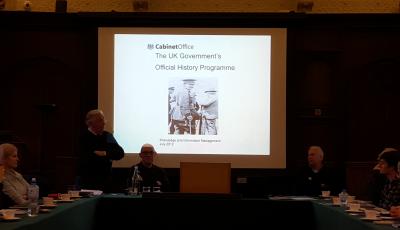Crime, Criminology, and Criminal Justice in 1966
In this post, DPhil candidate Dominic Aitken discusses the recent All Souls Criminology Seminar Series event held on Thursday, 21 January 2016 and chaired by Professor Roger Hood.
Posted:
Time to read:
Criminology has a fairly modest place in recent British history. Skimming through writings on postwar Britain, you’ll find a footnote here or there, perhaps a mention of Sir Leon Radzinowicz and the establishment of the Cambridge Institute of Criminology in 1959. The odd phrase or concept has become common currency―‘moral panic’ comes to mind―but the discipline has usually been more of a spectator than a participant. What criminology is for, whether it’s an intellectual or policy failure, and how we should measure its success, are open questions, and have been since its earlier days.

In 1966, what needed explaining was the problem of crime amidst plenty. The postwar world saw an economic boom unimaginable in prior decades, which ought to have brought social stability and harmony. Or so it was thought. What actually occurred was increasing crime, in tandem with a host of other upheavals in social and civic life. Public concern was typically based on shocking individual episodes of criminality such as the Moors murders, rather than sober reflection on the exact quantity and severity of crime rates. Nevertheless, crime rates defied explanation. What could account for a delinquent generation of affluent teenagers, personified by The Teddy Boys?
There were two dominant stories, according to Professor Rock. The first was moral, focusing on family breakdown, faulty socialization, and a lack of discipline. Bad outcomes, it was assumed, have bad causes. The obvious solution was a strong re-assertion of traditional values through reformatory institutions such as borstals and informal methods of discipline in the home and school such as corporal punishment. The second explanation presented itself as more scientific, stressing that crime was the product of complex, multifactorial processes. An array of typologies and correlations quickly emerged in journals such as The British Journal of Delinquency, first published in 1950, ten years later renamed The British Journal of Criminology. This story was recognisably criminological, though hardly prone to earthshattering insights. Indeed, despite its increasing research pedigree, scholars were often aware of the limited usefulness of their knowledge about the causes of crime. Barbara Wootton, one of the subject’s few high profile female voices, suggested that criminology was at its best when discrediting theories and exploding myths, rather than producing explanations of its own.

As important and appealing as historical change is, particularly when speaking of the often romanticised 1960s, in some ways the more compelling and tricky story is that of continuity. The 1960s police, for example, resisted major organisational reform despite considerable social unrest, public criticism, and scandal. Although the prisons introduced a new security classification system following the 1966 Mountbatten Report, Professor Downes argued that there was a continuing optimism about the reformatory potential of penal institutions no matter their apparent inadequacies. Reading a fuller account of how these institutions weathered political storms, and how they adapted to them, is an appealing prospect.
Criminology is in need of quality historical overviews of its recent past, and Professors Rock, Downes, and Newburn are well positioned to provide such an account. Given the increasingly refined and specialised discipline of contemporary criminology, we might be led to believe that with better quality data and methods, our most profound observations will be about the here and now, or the near future. This seminar was an important reminder that we cannot know our subject at present or any time soon if we lose sight of its recent, and more distant, past.
You can listen to a recording of this 50th anniversary lecture here.
Share:
